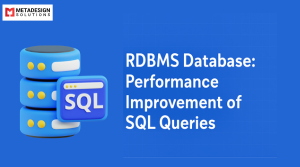Introduction
In the rapidly evolving landscape of artificial intelligence, understanding development patterns is crucial. One such advanced approach—the ReAct (Reasoning and Acting) pattern—is revolutionizing how AI agents operate by combining logical reasoning with action-taking capabilities.
At MetaDesign Solutions, we focus on crafting robust, scalable, and intelligent AI software solutions. The ReAct pattern is central to next-gen AI agent development, and this blog will show you how to effectively implement it, highlight best practices, and call out common pitfalls to avoid.
What is the ReAct Pattern?
The ReAct pattern enables AI agents to alternate between thought (reasoning) and action, simulating intelligent decision-making. Here’s how it works:
- Thought: The agent reasons about the current state.
- Action: It performs a task based on its reasoning.
- Observation: It observes the outcome.
- Repeat: It refines its strategy.
This approach enhances capabilities in natural language processing (NLP), task automation, and autonomous systems, making it especially suitable for industries like finance, healthcare, and customer support.
Best Practices for Implementing the ReAct Pattern
To build effective AI agents using the ReAct pattern, follow these best practices:
1. Start Small and Scale
Begin with limited AI-powered features. Introduce complexity gradually.
2. Tight Feedback Loops
Short cycles between action and observation enable rapid learning—critical in machine learning workflows.
3. Use Modular Architecture
Design your AI tools using independent components. This helps in updating models without disrupting functionality.
4. Continuously Monitor and Improve
Use analytics and logs to track behavior and refine AI strategies in real-time.
Want to Implement the React Pattern Effectively?
Book a session with our AI experts to build reliable, context-aware agents using best-in-class ReAct practices.
Common Pitfalls (Gotchas) in ReAct Pattern
Despite its power, the ReAct pattern can be misapplied. Watch out for:
1. Overengineering
Trying to do too much from the outset can make the agent unstable and hard to debug.
2. Ignoring Observations
Failing to integrate feedback mechanisms can make your AI agents repetitive or erroneous.
3. Lack of Modularity
Hard-coding logic leads to fragile systems. Prefer plug-and-play AI modules instead.
Real-World Applications of the ReAct Pattern
AI agents using the ReAct pattern have already proven their value across industries:
- Customer Support AI: Adaptive chatbots that understand user queries and escalate issues intelligently.
- Healthcare AI: AI-powered diagnostics that respond dynamically to patient data.
- Finance AI: Trading bots that reason based on market data before executing trades.
- Smart Assistants: Personalized agents in smart homes and apps adjusting behavior based on routines.
- AI tools for project management: Agents handling planning, follow-ups, and resource allocation dynamically.
Technologies & Tools Supporting the ReAct Pattern
Popular frameworks for implementing this pattern include:
- LangChain
- OpenAI GPT-based tools
- Hugging Face Transformers
- Pinecone for vector-based memory
These platforms empower developers to build generative AI workflows that simulate cognitive functions in software.
Why Choose MetaDesign Solutions for AI Agent Development?
We specialize in:
Whether you’re building advanced AI chatbots, diagnostic agents, or enterprise automation tools, our team helps you integrate the ReAct pattern with ease and scalability.
Conclusion
The ReAct pattern is a game-changer in AI development—a blend of reasoning, acting, and learning. It’s designed for real-time applications, adaptability, and integration into dynamic environments. By leveraging this pattern effectively, your AI agents can deliver precision, efficiency, and innovation at scale.
Ready to Build Smarter AI Agents?
📅 Book a consultation with our AI experts and let us help you deploy intelligent, adaptive solutions today!
Relevant Hashtags:
#AIagents #ReActPattern #ArtificialIntelligence #MachineLearning #AIdevelopment #GenerativeAI #NLP #GPTSolutions #EnterpriseAI #LangChain #OpenAI #SmartAssistants #AItools #Automation #MetaDesignSolutions



